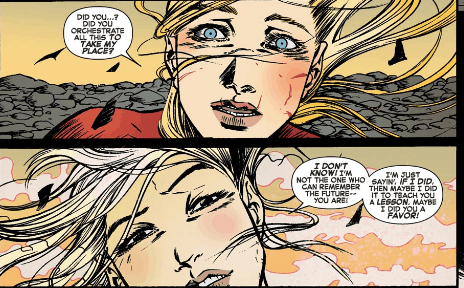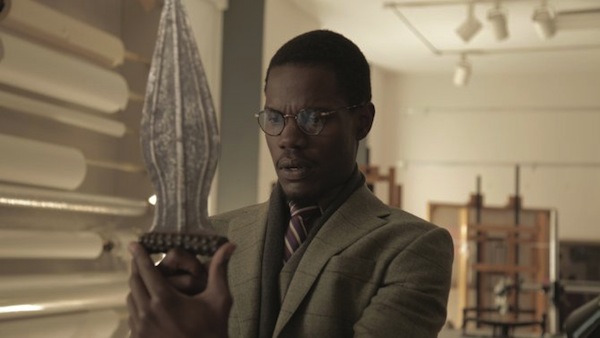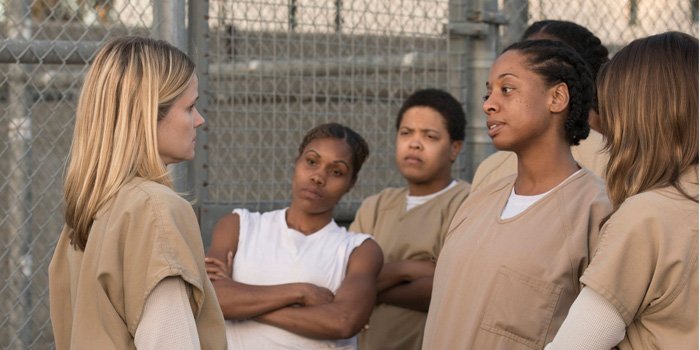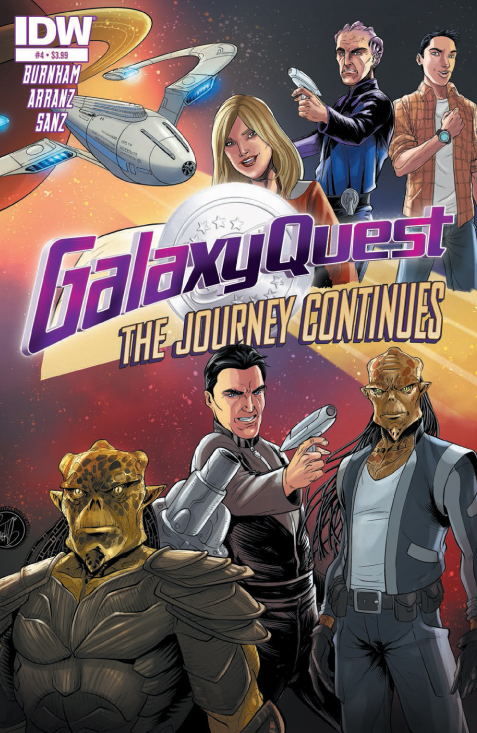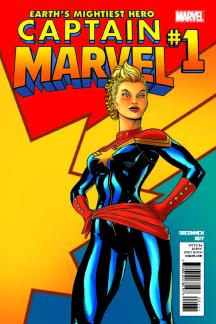 In August 2012, Captain Marvel #1 was published, Ms. Marvel became Captain Marvel, and the rest is history. Jamie McKelvie gave her a bold new costume, Kelly Sue DeConnick revitalized the character, and Carol Danvers found a brand new fanbase. Marvel had a hit on its hands: a progressive, empowered, feminist version of an infamously hard-done-by superheroine.
In August 2012, Captain Marvel #1 was published, Ms. Marvel became Captain Marvel, and the rest is history. Jamie McKelvie gave her a bold new costume, Kelly Sue DeConnick revitalized the character, and Carol Danvers found a brand new fanbase. Marvel had a hit on its hands: a progressive, empowered, feminist version of an infamously hard-done-by superheroine.
Or… so the popular narrative goes.
I’ve written before about the unprecedented power, influence, and energy of DeConnick’s Captain Marvel run. The new costume, the new name. The positive message about self-empowerment, re-creation, and the punching of dinosaurs. The crafty, creative Carol Corps.
But it seems to me that while DeConnick and her artistic collaborators Dexter Soy, Emma Rios, and Felipe Andrade deserve all the praise for creating a new Carol Danvers for the ages, a lot of that praise mischaracterizes what is so brilliant and meaningful about the DeConnick-era Carol.
After all, new beginnings don’t mean anything if they ignore what existed before. What makes DeConnick’s Captain Marvel so meaningful is that she’s a brilliant new beginning that also looks backward. DeConnick and her collaborators recreated Carol Danver’s 50 years of history instead of creating something entirely new.
Some are born superpowered, some achieve superpowers, and some have superpowers thrust upon them. Carol Danvers definitely belongs to that third category, gaining her powers in an accidental Psyche-Magnetron explosion that left her with alien DNA. Carol’s powers aren’t inborn, and she didn’t create them for herself. She gets her superhuman genetic structure–as well as her name–from Mar-vell, giving her super-strength, invulnerability, and flight.
It would be a mistake to understand Carol’s empowerment as an accident of fate. Her story is not just a power fantasy, but a fantasy about wish fulfillment: the Psyche-Magnetron is a formidable Kree weapon that reshapes matter according to the wishes and desires of people nearby. Later, in the 1980s, Carol obtained the ability to absorb and redirect energy. Just as her origin story involved taking on Marvel’s powers and name, the very nature of Carol’s evolving powers is about absorption and recreation: regeneration and reinvention instead of invention.
During House of M, a self-destructing Wanda Maximoff responds to Carol’s subconscious wishes, transforming her into “Earth’s Mightiest Hero.” Once again, Carol is granted extraordinary powers from outside herself–but once again, they happen in response to her deepest, most essential desires.
In DeConnick’s Captain Marvel (2012) #6, Carol travels back in time to the moment of her superheroic transformation. She not only has to choose to make her origin story happen a second time, but she has to fight tooth and nail to prevent Helen Cobb (her mentor/rival) from becoming “Captain Marvel” in her place.
DeConnick recreates Carol Danvers’ origin story, framing it as a moment of Carol’s making instead of a lucky accident. The time travel isn’t just a sci-fi plot device, but a metaphorical one: revisiting the past, consciously choosing and recreating it.
I love this scene because it crystallizes exactly what is so inspirational about Carol–her ability to reclaim her agency from external forces, again and again, and again.
Carol is a recovering alcoholic, and so she’s undertaken a lifelong project to overcome her inner demons. In a very real way, Carol’s victory over her disease is as central to her heroism as her origin story. Her addiction and painful past don’t shape who she is. She reclaims agency over her history–to put it in explicitly superheroic terms, she’s absorbing and redirecting its power. She’s the hero of her history, not its victim.
While she’s recently become one of Marvel’s flagship heroes, Carol Danvers’ fictional biography makes her sound more like a professional punching bag than a powerhouse. She’s been kidnapped, incapacitated by alcoholism, impregnated against her will, unfairly spurned by the Avengers, repeatedly brainwashed, and depowered and repowered again and again and again.
While de-powering (and re-powering) is one of the most common superhero stories out there, it seems to happen with unusual regularity to Carol Danvers’ powers–they’re constantly being changed, stolen, lost, or manipulated. In Avengers Annual #10, Rogue doesn’t just “steal her powers”, but also absorbs her personality and identity to an extent. Later, as “Binary,” Carol gains new powers and a new name courtesy of the Brood and a collapsing star. She’s also frequently faced off with Mystique, an infamous identity thief.
DeConnick picked up on this pattern in the Avengers Assemble crossover “The Enemy Within,” in which Carol is diagnosed with a brain tumor that forces her to choose between her powers and her past; every time she flies, she risks forgetting everything about herself. Carol ends up choosing heroism over her memories, battling an externalized version of her history in the form of a resurrected Yon-Rogg.
While Carol ultimately defeats Yon-Rogg and loses her memories, she is eventually re-taught them by a young fan in issue #17–her past is rewritten and reinvented once again. As usual, that reinvention tends to come from an external source (alien artifacts, Wanda’s reality-reshaping, authorial re-writing), but it’s also ultimately shaped by Carol: her strengths, weaknesses, and desires.
And that’s the essence of DeConnick’s iconic, lyric promise in Captain Marvel #1.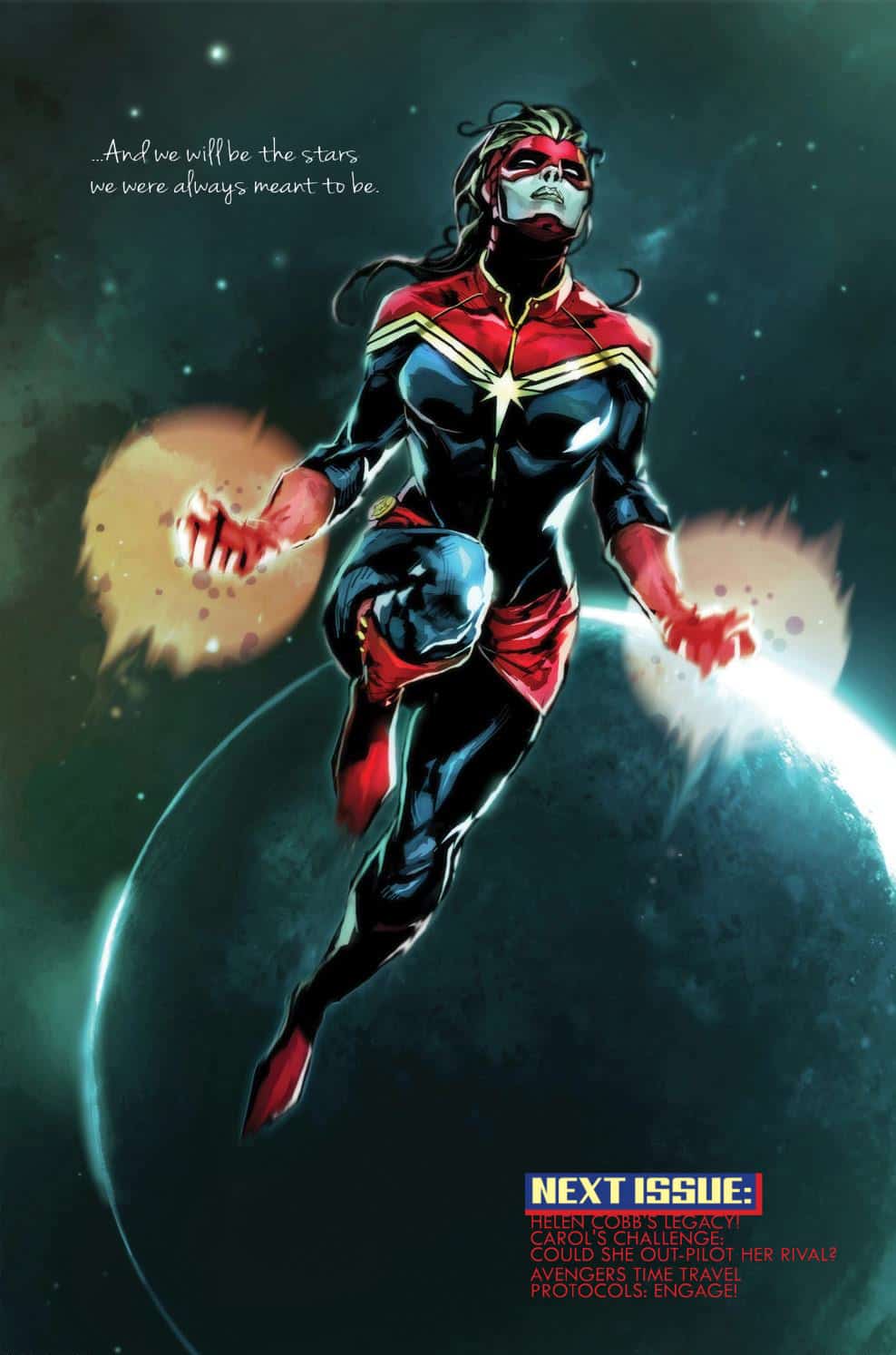
Indignity may be damned, but it’s never forgotten. Throughout Carol’s dark history and bright future, mastery of her powers means reclaiming her memory and history, not cutting it out completely.
Her lowest moments are typified by power and agency being forcefully ripped away from her: unconsciousness, illness, sexual assault, being fired from the Avengers, loss of her powers. We could understand Carol’s worst history as a series of terrible incidents beyond her control. But I understand it as a sequence in which Carol repeatedly and cyclically regains control, even in the face of terrible odds.
I sympathize deeply with Carol’s seemingly cycle of disempowerment, recovery, re-empowerment, and reinvention. For me, it’s evocative of the cycle of long-term illness.
A few years ago, I found myself on the other side of a long period of devastating mental and physical illness. I felt proud and empowered after my recovery like I’d won a victory. But I also felt irreversibly changed by my experiences. It wasn’t just that I was traumatized by what had happened, or embarrassed by the two-year gap in my résumé–although it was also that. It was that I felt certain that I was an entirely new person. I was healthier, but I was never not going to be sick, ever again. I had learned that life was short, so I might as well give it a shot and write professionally, the way I’d always secretly wanted to. I started writing under a pen name because it helped me come to terms with my post-recovery self. I felt like had rebuilt myself, so I gave myself a new name.
In Captain Marvel #1, while battling the Absorbing Man, we see Carol Danvers decide to take on the name “Captain Marvel”–after some urging by Captain America.
It’s an indisputably iconic, empowering moment in Carol’s history. But, ironically, it’s a little complicated as a simply feminist moment. Carol receives her (male) teammate’s blessing to (re)name herself after the original (male) Captain Marvel–presumably to avoid the continued indignity of Earth’s Mightiest Hero (and Avenger, and decorated military officer) answering to the title “Ms.”
But the name “Ms. Marvel” was originally not intended to indicate that Carol was the second-rate girly knock-off of a better-known male hero. In 1977, Roy Thomas named her “Ms.” to explicitly evoke the feminist movement, Ms. Magazine, and second-wave self-empowerment.
In 2014, we saw Carol passing the name Ms. Marvel on to Kamala Khan. In G. Willow Wilson’s Ms. Marvel series, Kamala is granted miraculous Inhuman superpowers, but she is inspired to become a superhero due to her admiration of Carol Danvers–much like Carol’s original transformation was produced not only by the Psyche-Magnetron but by her own subconscious wish to be powerful and heroic.
In Ms. Marvel #1, Carol appears to Kamala in a dream, granting her blessing and her old name–much like Steve Rogers gives Carol his approval in Captain Marvel #1.
This moment re-invents the history and the significance of the “Ms. Marvel” name, indicating that it’s a legacy rather than a diminutive derivative, and severing a problematic, decades-long pattern of men naming Carol after other men.
Higher, further, faster, more. in 2014, Marvel relaunched Captain Marvel, sending her into space. Carol left the earth as if she was symbolically leaving her past behind. But the 2014 series ended with Carol coming home and learning the shocking news that her dear friend and mentor Tracy Burke had passed away. Carol’s amazing interstellar adventures are suddenly grounded by very real, very human tragedy. DeConnick used the issue to express and explore her own grief, and it was a story that resonated deeply with me–I had recently lost my grandfather, and I felt that same desire to reframe pain and loss into new meaning.
More recently, Carol said a poignant farewell to Kamala in “The Last Days of Ms. Marvel”, and in DeConnick’s final Captain Marvel issue (Captain Marvel and the Carol Corps #4, we see her rebelling against Doom’s repressive regime to explore the unknown–again, reaching for the stars.
Gritty past versus starry-eyed future: that tension typifies the best of the re-invented Carol Danvers. The brilliance of Carol Danvers, and the brilliance of Kelly Sue DeConnick’s reinvention of that character lies in the idea of re-invention and re-creation–in that weird, heady, transformative sensation of having your boots in the dirt at the same time you’re flying headlong into the stars.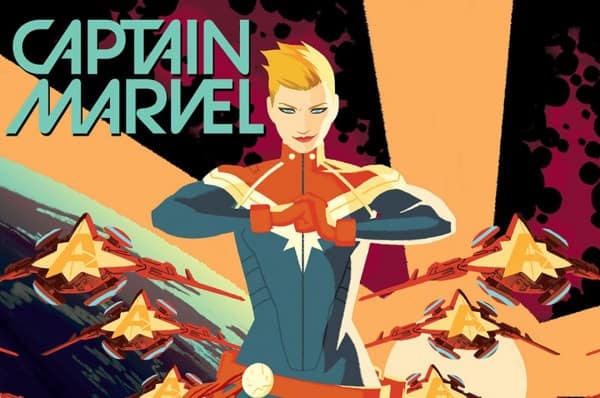
And there are even brighter things in Carol’s future. Her All New All Different series dropped last week, and she’ll be starring in a 2018 movie as Marvel Studios’ first female headliner. In the Comics and Cinematic Universes, Carol Danvers will be reinvented yet again for whole new audiences–and she’ll be all the better not in spite of but because of what she’s been before.
Carol’s most inglorious moments continue to shape her current personality and the meaning of her glorious renaissance. Her stubbornness and competitiveness are always at odds with her loyalty and heroism. Her defining desire to be better, faster, more than anybody else contrasts with her powerful connections to friends and allies. She’s gifted with supernatural powers of flight, but she’s still subject to the grounding pull of gravity–she’s tied to the past as she soars fearlessly into the future.
I’ve always loved Carol because of how strong she was. When I was a kid, that was pretty literal–I especially liked how strong her big shoulders and muscly thighs looked in her old black bathing suit and thigh-high boots.
But in my twenties, Carol’s strength has taken on a whole new meaning for me. She’s given me a framework for understanding my own struggles with chronic illness and inspired me to create a new identity for myself. Winning and losing and winning your power so many times, getting up one more time than you got knocked down. Then shooting off into space for good measure–just to show ‘em.
I think I’ll conclude this piece by going back to my point about Carol’s story being fundamentally about wish fulfillment. Carol Danvers is not just a fantasy about being powerful–she’s my fantasy that I can be powerful because my desires are powerful.
She’s a fantasy that we are strong enough to triumph over our minds and bodies and misfortunes. Strong because of our misfortunes. Strong enough to be the people we choose to be.

